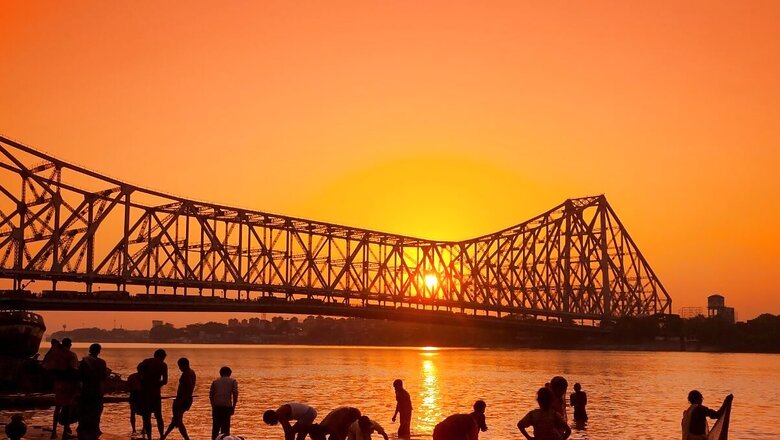
views
Interestingly, the father of West Bengal, Syama Prasad Mookerjee, too had clamoured for a division of united Bengal in 1946. From then to 2024, the real reason hasn’t changed much — imbalanced demography and instilling a sense of survival instinct among Hindus.
Dubey demanded that Malda and Murshidabad of Bengal and Araria, Kishanganj, Katihar and the Santhal Parganas of Jharkhand be declared a Union Territory, blaming the House he was speaking at for “not worrying” about it and pinning it on “vote bank politics”. His target was clear — an alleged increase in the Muslim population in these areas.
Interestingly, more than 75 years ago, Mookerjee demanded the partition of Bengal in 1946 to prevent the inclusion of its Hindu-majority areas in a Muslim-dominated East Pakistan — now known as Bangladesh. The premise of Mookerjee was simple — Hindu-dominated areas of Bengal, present-day West Bengal, must not be a part of the rest of Bengal — now Bangladesh — fearing religious atrocities on Hindus.
Mookerjee and Dubey both asked for division of Bengal and their reason remains eerily similar.
MOOKERJEE, BENGAL RIOTS & GOPAL PATHA
The year 1946 was more significant for Bengal than any other province. The Noakhali riots, which were a series of semi-organised massacres, rapes and abductions on Hindus in the districts of Noakhali in the Chittagong Division rocked Bengal. Around this time, the buzz about the creation of Pakistan based on religious lines came up. The riots deeply affected Mookerjee. He realised if this could happen in Muslim-dominated areas like Chittagong, unified Bengal joining East Pakistan would bring a similar fate for the Hindu-dominated portion of Bengal.
Another event the same year also left a mark on Mookerjee — the Great Calcutta Killings. Starting on August 16 in 1946, Calcutta (now Kolkata) saw unimaginable communal riots that lasted four days and claimed nearly 10,000 lives. The trigger was one — All-India Muslim League’s call for ‘Direct Action Day’ to ask for a separate Muslim homeland. But unlike in Noakhali, Calcutta was in a Hindu-dominated area which saw the emergence of Gopal Mukherjee — better known as Gopal Patha — who created a Hindu resistance and is said to have later refused to surrender arms even at the call of Mahatma Gandhi — known for his non-violent means.
Mookerjee was deeply affected by both events and, in his mind, he was now clear about what he wanted.
A meeting held by the Hindu Mahasabha — that he headed — on April 15, 1947, authorised him to proceed with the partition of Bengal. The very next month, he wrote to Lord Mountbatten that Bengal shall and must be partitioned even if India is not. He envisioned a Bengali Hindu homeland like Israel today.
“Today, the TMC is accusing us of breaking West Bengal. Do they know that in the face of mass killings and people like Suhrawardy, it was Mookerjee who created West Bengal? Had he not been there to split Bengal, the West Bengal as we know today would be part of Bangladesh,” said BJP’s Rajya Sabha MP Samik Bhattacharya.
NISHIKANT’S DEJA VU
There’s an uncanny way in which history repeats itself. Nearly eight decades after Mookerjee ensured Bengal is bifurcated, a BJP MP has asked for pretty much the same.
In a short but provocative speech in Parliament, Nishikant Dubey laid down some facts. “The state I come from, when Santhal Pargana separated from Bihar and became a part of Jharkhand, in 2000 tribals formed 36 per cent of the population. Today, their population is 26 per cent. Where did 10 per cent of the tribals vanish? This House never worries about them, it indulges in vote bank politics.” He blamed “people from Malda and Murshidabad” — two Bengal districts with a significant Muslim population — for riots in Pakur’s Taranagar-Ilami and Dagapara.
Next came the reason in a more explicit way. “There are 100 tribal ‘mukhiyas’ in our area but their husbands are Muslims… Riots broke out in Pakur’s Taranagar-Ilami and Dagapara because people from Malda and Murshidabad were ousting our people and Hindu villages were going empty. This is a serious matter. I am saying this on record, I am ready to resign if what I am saying is incorrect,” said Dubey, stirring a hornet’s nest with the focus on demographic change.
He claimed that Jharkhand Police is unable to act. “Kishanganj, Araria, Katihar, Malda, and Murshidabad should be made a Union Territory, otherwise Hindus will disappear. Also, implement NRC,” was his quick fix. Assam has undergone NRC to weed out illegal immigrants, particularly from neighbouring Bangladesh. Now, Dubey wants one in his proposed UT.
“If nothing else, send a committee of the House there and implement the report of the Law Commission from 2010 that permission is essential for conversion and marriage,” he concluded.
At the core of Dubey’s argument lies the same issue that forced BJP ideologue Mookerjee to write a letter to Mountbatten asking to bifurcate Bengal — shielding the interests of Hindus in the face of an allegedly increasing and disproportionate Muslim population.
While the official Bengal BJP stand is against any further division of Bengal, Bhattacharya reminded of “efforts to colonise India through infiltration”. When it comes to allegedly changing demographies in border districts, there seems to be an agreement between Nishikant Dubey and Bhattacharya — both say it must stop now.


















Comments
0 comment